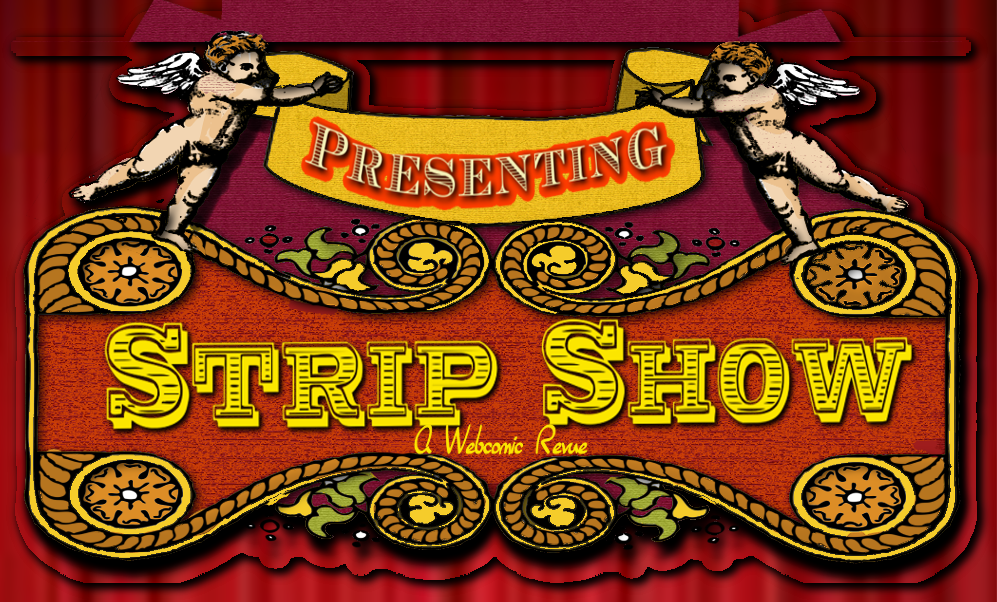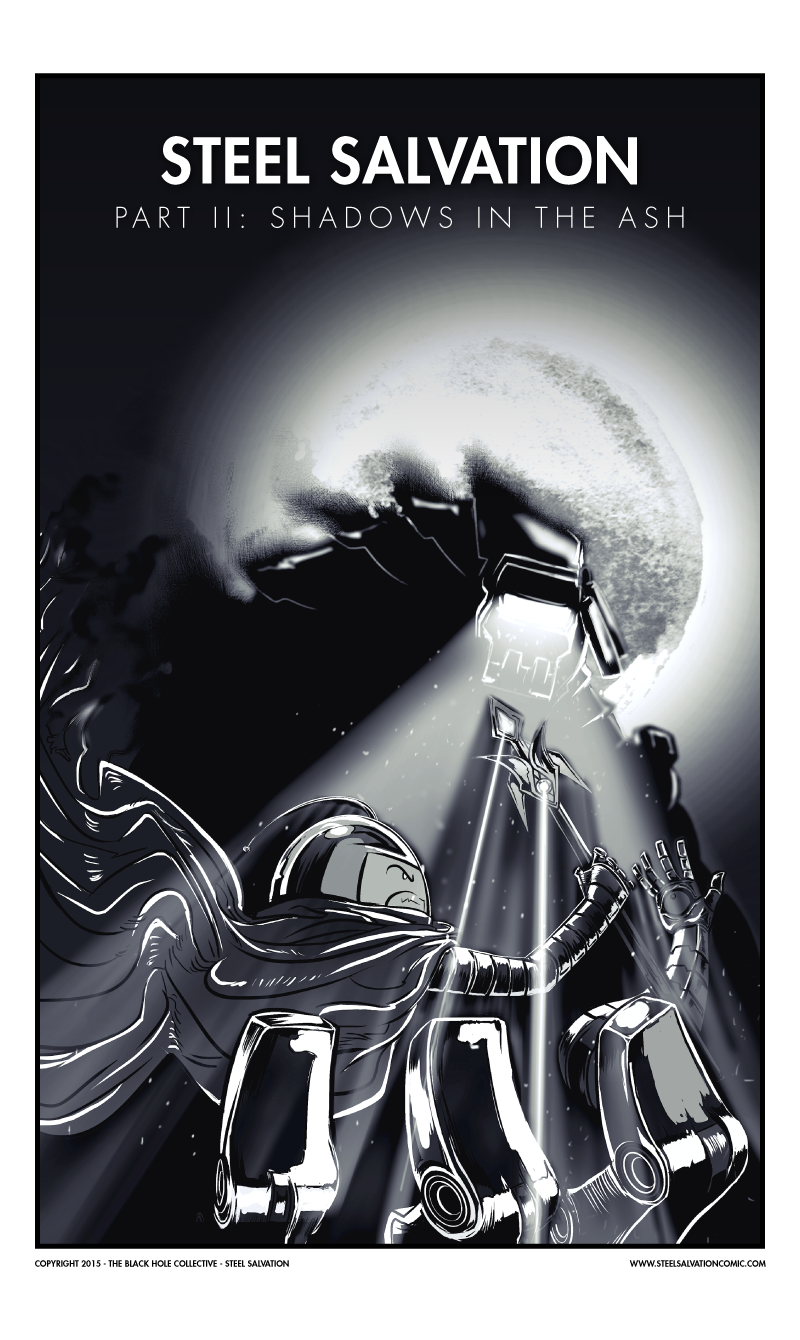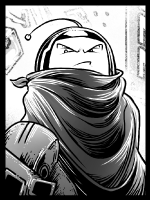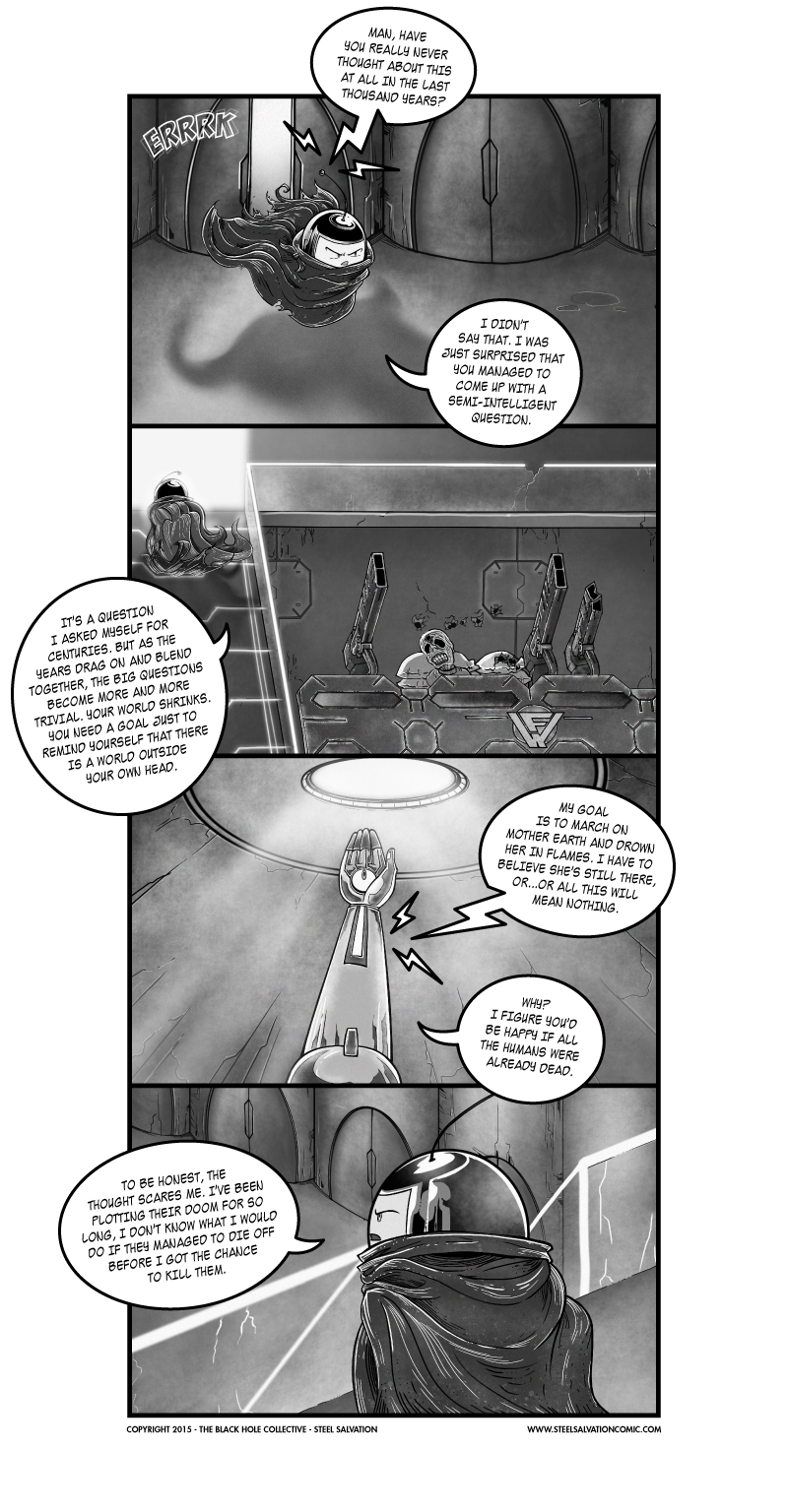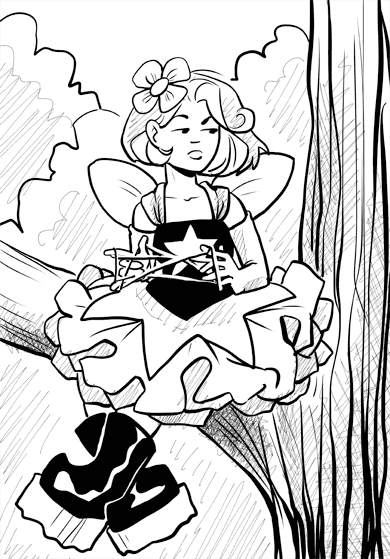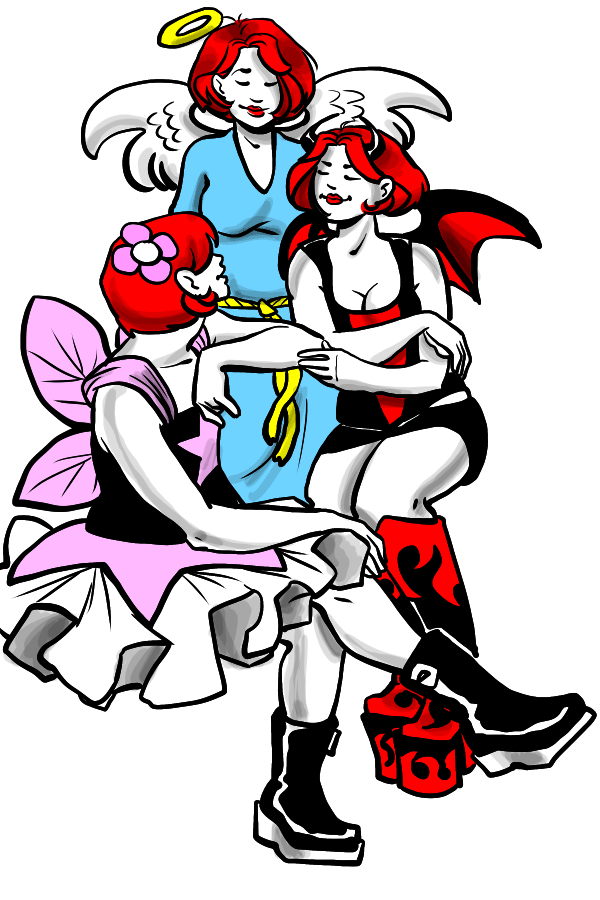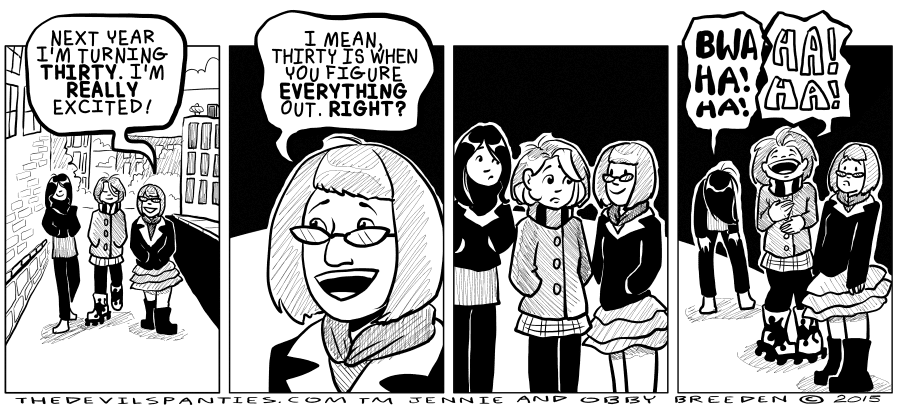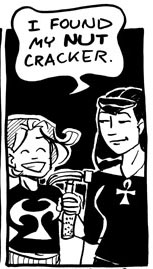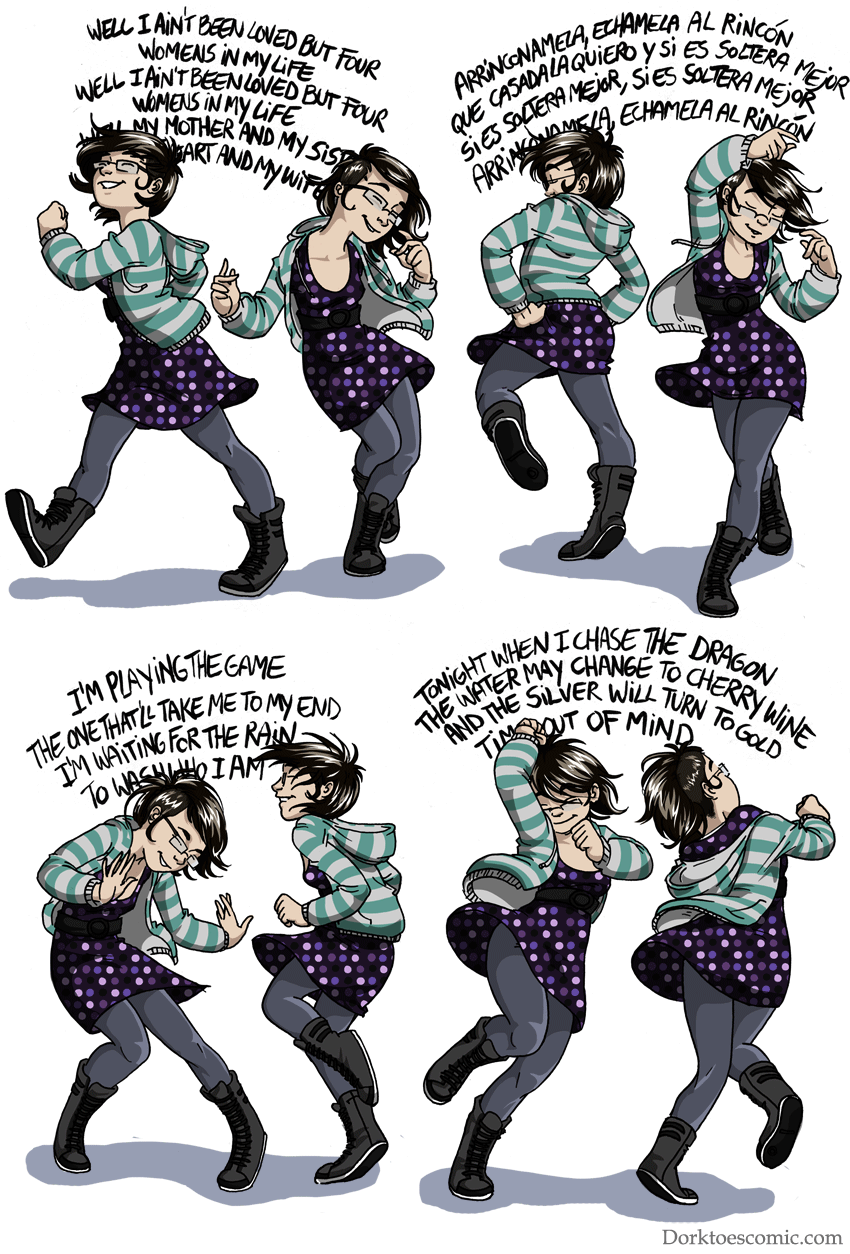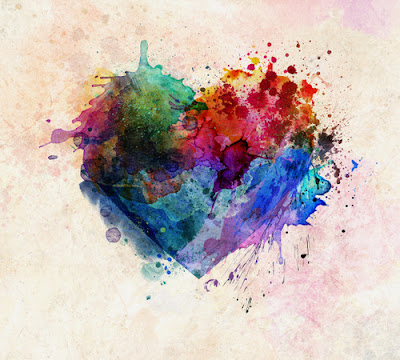Grab A Seat!
 Time For The Monthly Matinee!
Time For The Monthly Matinee!
This Month, It's Loving Your Art!
Love. It's a strange thing, and one of the strangest relationships is your love for your own art. It's a odd and overwhelming passion, inexpiable. And if putting the passion you feel into words is hard, putting those days when nothing works into words is impossible. This subject crops up whenever I browse the creative forums; too often, our love of our craft gets bogged down. It fizzles before we even begin, it seems to fade, it hits a brick wall of self doubt and frustration. It becomes a source of anxiety.
There's plenty of tutorials out there on how to figure out perspective, but perhaps not enough on how to sort out your own emotions and how they relate to your work. So in this month named for the goddess Fevera, lady of the human heart, let's talk about how to love our own craft. This is a tutorial for all the beginners out there, terrified that they'll do it wrong. But I'm also penning this for the veterans who ask themselves 'what the hell am I doing?' I'm writing this for your bad days, when you wonder why you write or draw at all.
Step 1-Find The Why
Why do you create art? Have you ever really stopped and asked yourself that?
If you haven't, stop reading right now, sit down with a blank sheet of paper, and do so.
Got an answer?
Wrapped up inside the reason you create is the reason you don't.
So, when you really look deep down, did you find your answer to why you create was 'I want someone to pay attention to me?'
If you're doing something because, secretly, you want others to pay attention to you, you're already in trouble. You will get frustrated when you don't get the attention you want. You will get hurt when others critique your work, because you will hear 'I'm not good enough'. You will have an AWFUL lot of heartache, because you've made your own ability contingent on the thoughts of others. It's like letting the weather dictate your mood.
In the
Business Insider, a 12-year brain study of a number of Tibetan monks was performed, and Matthieu Richard, the 'happiest man', that is, the man whose brainwaves were most synchronous and working most optimally, was interviewed. When asked 'why are you happy?' one of the first things mentioned was 'to Ricard, the answer comes down to altruism. The reason is that, thinking about yourself and how to make things better for yourself all the time is exhausting and stressful, and it ultimately leads to unhappiness.'
If you find yourself thinking 'nobody likes my work', 'why doesn't anybody care about what I'm doing? or 'I'm no good', please read Step 2.
Do you stay up at nights, dreaming about what characters should look like or what storyline works, but fail to work on your project? Do you tell fifteen friends that you're 'working on a script' but play on Facebook instead of writing? Sounds like you're suffering from Idea Debt.
 Jessica Abel credits Kazu Kibushi with coming up with the term 'Idea Debt', the pouring of energy into ideas that hang on for YEARS without going anywhere. The problem with Idea Debt is that you're so caught up with the image of what something will be like DONE that you're afraid to DO it, afraid that it won't be as good. Add to that the fact that the image itself becomes much more attractive than the hard, messy process of work, and you end up with a beautiful and elusive idea that you never work on. To fight this, read below.
Jessica Abel credits Kazu Kibushi with coming up with the term 'Idea Debt', the pouring of energy into ideas that hang on for YEARS without going anywhere. The problem with Idea Debt is that you're so caught up with the image of what something will be like DONE that you're afraid to DO it, afraid that it won't be as good. Add to that the fact that the image itself becomes much more attractive than the hard, messy process of work, and you end up with a beautiful and elusive idea that you never work on. To fight this, read below.

If you're driven to keep creating because the story is pulling you forward, because the act of storytelling is pulling your heart and your hand forward every day, then count yourself lucky. You've found and made a story you love, and it is a living, breathing entity.
So why do you have days where it fells like there's a wall between you and your world? Days when you're wired but the words and images won't flow?
In ancient Irish myth, there was a belief that creators were touched by the Lehanahn Sidhe. This Irish muse gave you the gift of creativity, but she exacted the price of your health and sanity. I've always seen her as a metaphor for the craftsman's tendency to drive themselves so hard that they, quite literally, burn themselves out physically. The human body can't run on empty. Period. Ask yourself, what am I doing with my body while my heart and mind are far away? Am I living on mountain dew and donuts? When was the last time I saw the sun? Went for a walk? It's hard for great things to come out of a mind that's in a suffering body. Read below to help with these issues.
"I just don't have time for my artistic stuff now that I have this job/these kids/this other thing/ect. ect. ect. We all hear it. We've all been there.
And it's not true.
Ghandi said it best. 'If it is important, you will find a way. If not, you will find a reason'
Don't get into the trap of 'I can't because of fill in the blank'. If you do, you'll begin to resent both the thing you want to work on and the thing you're blaming for stopping you. And then you're sure to be miserable. Read below for ways to find space in your day. And, seriously dear readers, drop the guilt. If you don't have time for something, set it aside. Stop feeling guilty for not doing it. If you love it, set something else aside. Ask yourself 'what will be really good for my peace of mind?' and then do it. If you answered the question honestly, you have nothing to feel guilty for, do you?
Step 2-Work For Work's Sake
 |
| Candy Rock by mikemaihack on deviantART |
- Start Routines, Train Your Brain
What's the best way to eat an elephant? A bite at a time. What's the best way to create a comic? Drawing for fifteen minutes every day. Fifteen minutes isn't much, but the point isn't to get a lot done. The point is to teach yourself that these fifteen minutes/ half hour/ afternoon a week are DRAWING TIME. The monk Richard said it like this, in reference to the equally difficult task of learning to meditate: 'It's like running. If I train, I might run a marathon. I might not become an Olympic champion, but there is a huge difference between training and not training. So why should that not apply to the mind?'
You are training your brain to want to tell your story. You're teaching it through repetition that this is what it needs to do.
According to NPR's interview with the author of '
The Power of Habit:Why We Do What We Do in Life and Business'
by Charles Duhigg, 'Neuroscientists have traced our habit-making behaviors to a part of the brain called the basal ganglia, which also plays a key role in the development of emotions, memories and pattern recognition. Decisions, meanwhile, are made in a different part of the brain called the prefrontal cortex. But as soon as a behavior becomes automatic, the decision-making part of your brain goes into a sleep mode of sorts.
"In fact, the brain starts working less and less," says Duhigg. "The brain can almost completely shut down. ... And this is a real advantage, because it means you have all of this mental activity you can devote to something else."
So teach your brain 'hey, it's time to draw. Period'. Stop thinking about whether you'll draw or not, and there's more brainpower for ART.
Right Here, Right Now
One of the most meaningful things you can do for yourself as an artist and a human being is to set aside time that has a specific purpose, and accomplish that purpose.
Rachel Kelly of the Guardian puts it best:
'We are human beings, not human doings, and it’s very easy to forget that in the frenetic world in which we live. Make a point of setting aside time for a night off and defend space in your diary for doing nothing at all. And if you suffer from FOMO (the fear of missing out), re-calibrate and think of it instead as the joy of missing out. A night in can be just what the doctor ordered to maintain a sense of control over busy lives.'
Just be. Choose that time that is just yours, and let your mind grow still. While you're in this space, the rest of the world goes away, and you are lost in your passion. Lose the future. Lose the past.
Just BE.
I myself am a crew leader at a horticultural company with over 100 accounts. I work 12 hour days. Every day, I get up at 5 and draw for two hours. Then I go to work. In those two hours, nothing exists but me and my art. No future, no past. Just my breathing, my characters, my stylus and my hand in motion.And it works.
Dreaming mindfully for two hours in the morning lets me be fully present for the rest of the day. Find your dreaming space, and lose yourself in it.
One of the biggest things that slows new or nervous artists down is also the stupidest: fear of not being good enough.
If you'd been afraid to look stupid as a child, you'd never have learned to walk, because we look STUPID falling on our butts. But we do it. And we learn. And then we run.
Please look at the two pictures above. They were done by the same artist,
Marc Allante, at ages 6 and 26. If you draw every day, you WILL get better. It's an inevitable progression. But if you become defensive when people tell you what needs work, if you give up on art because you're 'no good', then you will never get there. Perfectionism is like a drug, dear readers. In small doses it is medicine. In large doses, it's a poison.Rachel Kelly recommends this for those of you who are afraid to work because it doesn't live up to your hopes: 'Follow the 60% rule. Perfectionism is an illusion, but the pursuit of it is real and can have damaging consequences. So readjust your thinking. If a friendship, relationship, work project is 60% right, then you’re doing well. Beware too, of perfectionism’s close friends: an all or nothing approach; workaholism; fear of failure; and being over-sensitive to the judgement of others.'
 |
| The beautiful comic Saga reminds us that we're not dirty because of our pasts. We are just beginning something new. |
And even more poisonous than perfectionisim is comparison. If Stan Lee had been in the position compared himself to the 50 year old Miyazaki when he was 17, he might have broken his pen in half and given up.
We're back to the question: who are you drawing for? Other people who are going to say 'okay but you're not as good as so-and-so'? Or yourself? Because if you're drawing for yourself and your art, the only question is 'am I better than I was yesterday?'
Roger Cohen reminds us: “Everyone has something that makes them tick. The thing is it’s often well
hidden. Your psyche builds layers of protection around your most vulnerable
traits, which may be very closely linked to your precious essence. Distractions
are also external: money, fame, peer pressure, parental expectation. So it may
be more difficult than you think to recognize the spark that is your personal
sliver of the divine. But do so."
Step 3-Balance The Equation
You know what? When you're a better human being, you're also a better artist. When you're healthy, happy, and satisfied, the art flows. When you're sick, the work stutters. (ever tried to draw on Dayquil? That's an extreme example, but you get the point.) It's like a chemical equation. When everything balances, you get the results you want.
So here's some suggestions for achieving that balance.

Dear creatives, caffeine is not a food group! Sometimes all that crazy emotional turmoil you're feeling is shockingly simple to solve: drink some water, eat a decent meal and sit in the sun. You'd be surprised how often that works. It sounds ridiculous, but we live ridiculous lives in animal bodies. Our bodies evolved to move across savannas for most of the day. Instead we sit indoors. Common sense will tell you that when you're making something do things it's not designed to do, problems come up. So don't sleep four hours a night, eat occasionally, run on gallons of mountain dew/caffeine/drug of choice and then complain 'man, I feel so shitty, I just can't get any ideas!' OF COURSE YOU CAN'T, you're trying to think with a brain that's running on fumes and garbage! Eat sensibly. Eat regularly. Drink water. And try eating your lunch outside whenever you can: studies have shown that people who get more sunlight are happier.
 |
| Iris Scott |
That's right. The brain is not the only part that matters. And you're a lot more productive when you get up and move at least 20 minutes a day. If nothing else, get up, stretch, and go for a 15 minute walk every 4 hours. That deadline you're under? It won't get done any faster when you're staring angrily at it and banging your head against a wall of frustration. It might get done faster if you get up, freshen up and come back with renewed zeal. Give it a try.
 |
| The wonderful 'Valiant Hearts' is a great example of finding time for what's important, even in the most brutal conditions. |
You didn't get to draw because you were out with friends, and now you're guilty about it and resenting your friends.
STOP THAT CRAP!
Art cannot live in a vacuum. Neither can you. There is NOTHING wrong with taking a break. There IS something wrong with doing it grudgingly. That goes for working on art when you want to be out.
So what can you change?
You can change your own mind. Consciously telling yourself 'today is a day for fill-in-the-blank' changes one important thing: how you see the event. Now you made a decision to act, instead of being forced to do something you didn't want. Now you are in control of your life, not a passive victim of it.
Life is a dance. Part of the dance is stepping further away from one thing and closer to another for a moment. That doesn't mean you can't step back. Stop thinking of it as a tug of war, and start DANCING!
The Last Bow
So here it is, in a nutshell. Your brain is a tool, your body too. Care for them, feed them well, and take responsibility for them. Pay attention to what you're thinking about your art, and your life. If you don't like it, change it, even if all you change is your own thinking. It's your job as an artist to know that, and to choose to look at yourself in the mirror, look at your art with all its flaws and baby steps and honestly say

 Moonwraith has some interesting points, including its interest in telling us not only that werewolves exist, but that they were created by the weakness and greed of man. It aspires to be a wartime tale, asking the hard questions and showing you people doing the dreadful algebra of survival.
Moonwraith has some interesting points, including its interest in telling us not only that werewolves exist, but that they were created by the weakness and greed of man. It aspires to be a wartime tale, asking the hard questions and showing you people doing the dreadful algebra of survival. 